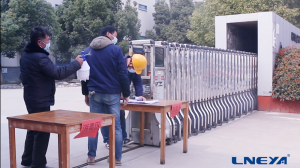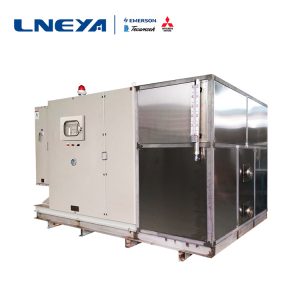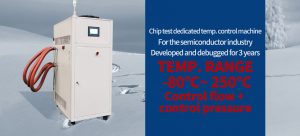Advantages of laboratory low-temperature circulators

The laboratory low-temperature circulator can simultaneously provide constant temperature and current refrigeration, heating, and temperature control equipment. The laboratory low-temperature circulator has a reasonable structure, simple operation, and good stability.
1. The laboratory low-temperature circulator uses a compressor for refrigeration, which consumes energy and improves the exhaust temperature. The refrigerant then exchanges heat with the surrounding medium under the right conditions, transferring the heat to the surroundings. If adiabatic expansion is carried out again, the temperature will decrease.
2. The laboratory low-temperature circulator absorbs isothermal heat from high-temperature objects through an evaporator to reduce the temperature of the object to be cooled. This cycle is continuously carried out to achieve the purpose of cooling. The design of the laboratory low-temperature circulator refrigeration system uses energy regulation technology. Effective treatment methods can not only ensure the normal operation of the refrigerator, effectively control the energy consumption and cooling capacity of the refrigeration system, reduce the operating cost of the experimental box refrigeration system, and achieve a more economical state.
3. The laboratory low-temperature circulator absorbs the heat of the object to be cooled from the evaporator and evaporates it with steam. The compressor continuously extracts the steam generated by the evaporator.
4. The high-temperature and high-pressure steam compressed by the laboratory low-temperature circulator is sent to the condenser, where the cooling medium (such as water, air, etc.) releases heat and condenses into a high-pressure liquid. The pressure is reduced through a throttling mechanism to enter the evaporator. Evaporate again, absorb the heat from the cooled object, and circulate in this way.
5. After the laboratory low-temperature circulator mechanism heats up, the refrigerant changes its flow through a four-way valve. The flow direction of the refrigerant is exactly opposite to the refrigeration process. The refrigerant first passes through the evaporator, then returns to the condenser, and then returns to the compressor.
Recommandations connexes
-
LNEYA lutte contre le "PCN" et reprend la production en toute sécurité
1363Le PCN jette un voile sur la nouvelle année 2020, mais le moment où tout se rétablira ne manquera jamais. À l'heure actuelle, pour de nombreuses entreprises du pays, la pression opérationnelle et les responsabilités sont très lourdes. Cependant, LNEYA ...
Voir les détails -
Vocs condensing separation equipment expansion valve maintenance instructions
941Once the expansion valve of the vocs condensing and separating device fails, if the solution is not solved in time, the entire vocs condensing and separating device may be unavailable. Therefore, the failure of the expansion valve of the vocs cond...
Voir les détails -
Instructions for component testing of chip inspection companies
1011With the continuous development of the component testing industry, chip testing companies have sprung up, and LNEYA has also introduced component testing equipment for chip testing. The test vector of the chip inspection company is stored in the v...
Voir les détails -
Failures of Heating Cooling Circulators
992The heating cooling circulator can be used in many chemical pharmaceuticals and laboratories. Then, how to solve the failures of the heating cooling circulator?Failure of circulating pumpThe failure of the circulating pump is generally the heat ov...
Voir les détails
 LNEYA Industrial Chillers Fabricant Fournisseur
LNEYA Industrial Chillers Fabricant Fournisseur













